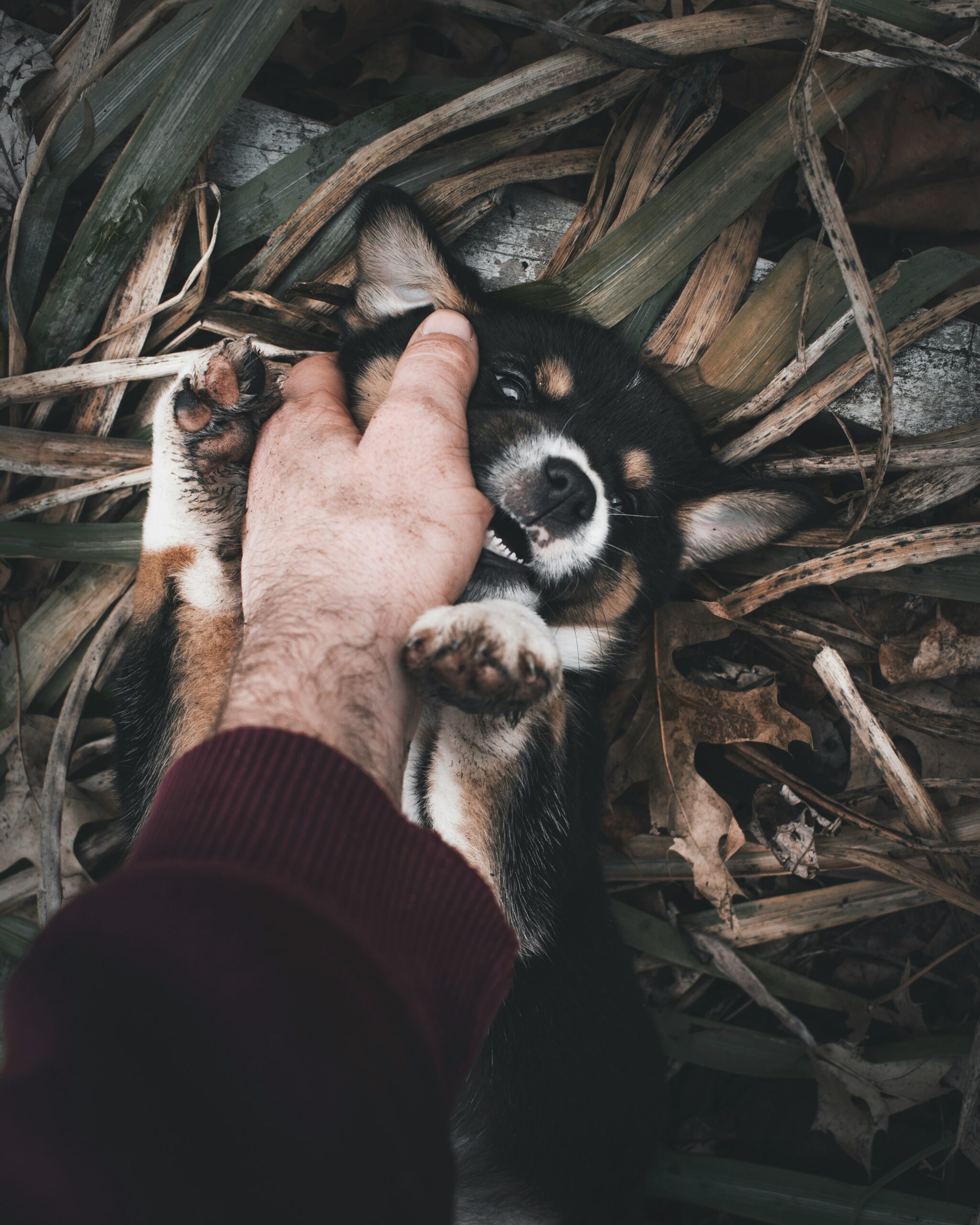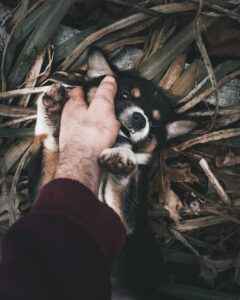You’ve just brought home the most adorable puppy on the planet: they’re sweet, soft, cute as can be….and really, really bitey! The puppy mouthing stage can be frustrating and overwhelming for even the most experienced pet parent, and can leave you wondering whether you brought home a dog or an alligator. You may also be asking yourself “is this normal?” and “how long does this last?”. The good news is that you’re not alone: every puppy parent on the planet has gone through this stage, and there is lots you can do to modify puppy-biting behaviour! Below is some expert advice to get you through the puppy biting stage.
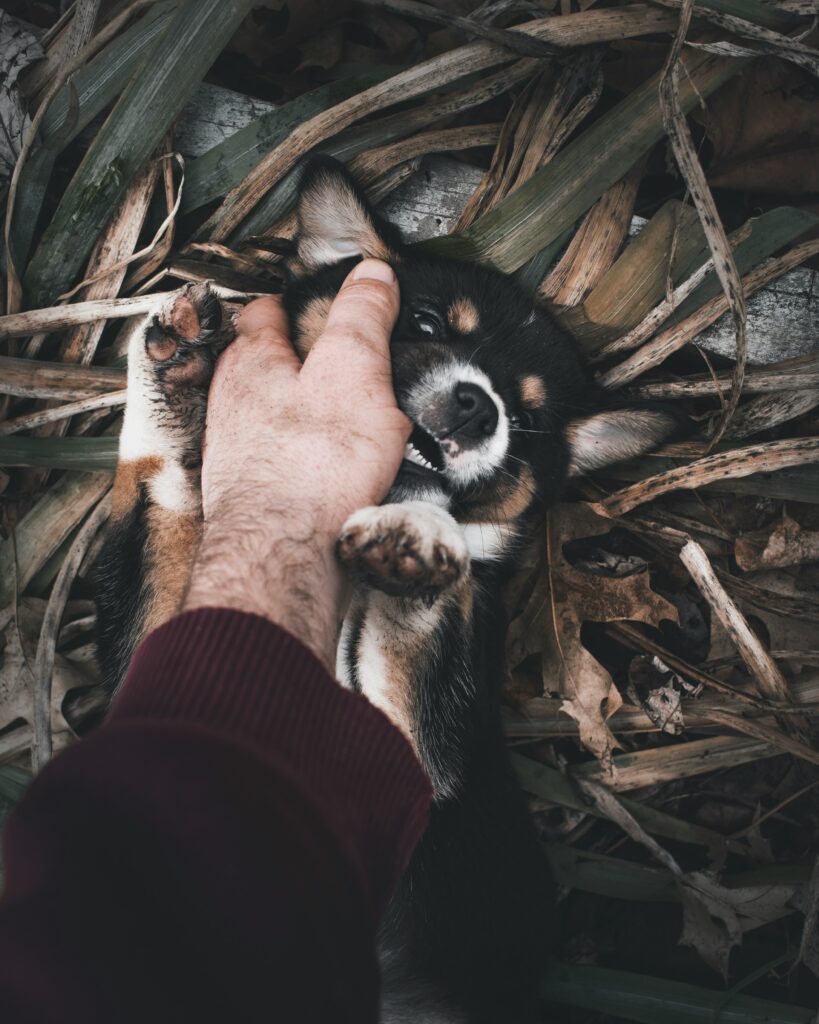
But First: Is This Normal?!
Yes, it’s normal! Even though it can seem excessive or out of control, it’s usually just a particularly annoying developmental period. Remember that dogs use their mouths in the same way we use our hands: they don’t have opposable thumbs so they use their mouths to grab, hold, carry items, and explore the world. Puppies are still learning how to live in the human world and interact with us, and biting/mouthing is an important part of that learning process. Moreover, puppies start teething around 14-16 weeks of age and that process is painful! You may find your puppy is particularly mouthy at this time.
Some breeds of dogs are more prone to biting/mouthing. Herding breeds such as border collies, Australian Shepherds, German Shepherds, and especially cattle dogs, are notorious for being “mouthy”. Working-line dogs of all breeds can be particularly bitey as well (e.g. labs, spaniels and other bird dogs) so if you are planning on getting one of these dogs, you can assume the puppy mouthing stage will be more pronounced than it would in a pug or other companion/toy breed.
You may also find that your puppy is mouthy at certain times in the day, especially during the early evening. We often call this the “Witching Hour”. Dogs are crepuscular, meaning they are naturally more active around sunrise and sunset, and tend to sleep throughout the day and night. Hence, puppy witching hour is natural and normal and most puppies do mature out of this.
With that being said, you don’t have to just suck it up and deal with puppy biting- there’s lots we can do to modify this behaviour! And we do want to modify/address it before it becomes a real problem- some dogs may carry the habit into adulthood if it’s been heavily reinforced.
Tips and Tricks
1) Set Up a Puppy Zen Den: giving your puppy a separate space enclosed by a pen or gate will help you more easily manage the environment and, importantly, allow you some much-need space from your puppy when they are in bite-y mode. A separate enclosure may also help your puppy learn to self-soothe and/or entertain themselves away from you. Zen Dens are especially important if there are kids in the house: they are a way to keep everyone safe, happy, and bite-free. Bonus: your kids can still play safely with the puppy while there is a gate or pen separating them!
A Zen Den is preferable to a crate during the daytime because it’s less confining , and allows the puppy more freedom of movement and the opportunity interact more with their environment. A Zen Den should never be used as punishment or as a “time-out” for biting, since this teaches the puppy that confinement or time away from their human is aversive/unpleasant. Instead, use the Zen Den proactively to prevent your puppy from biting at you by scheduling Zen-Den time around your puppy’s most bite-y times of day (e.g. the infamous Witching Hour).
If your puppy starts biting or mouthing excessively, redirect them onto a toy or chew and gently guide them towards their Den, then give them an enrichment project or simply play with them from the other side of the gate- that way the puppy doesn’t associate going into their Den with losing out on fun and play!
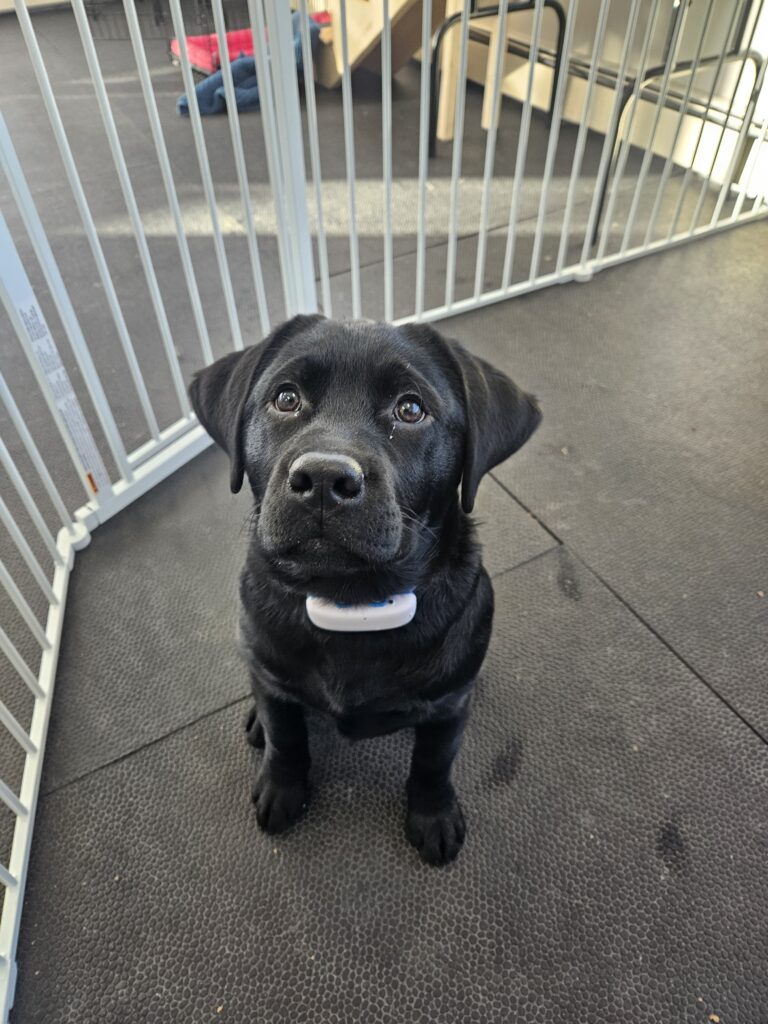
2) Prevention is the best policy: look for patterns in when the mouthing happens (time of day, location, etc.) and try to prevent by giving your puppy something to do or chew on before the biting starts, so that he’s engaged in other activities. For example, if it’s happening when you sit down to relax in the evening, try giving him something to do before you sit down. That is also a great time to put him in his Zen Den/playpen with something to do- this will prevent him from accessing you and will help him learn to self-soothe with an activity that doesn’t involve you. (Some ideas for activities are listed below.)
3) Give outlets for biting/chewing in the form of chew sticks, toys, and play: Puppies need to chew on things A LOT: think multiple times, every single day. Here are a few puppy-safe suggestions:
- Bully sticks and collagen sticks will be your best friends during this time. They were my go-to when my youngest dog was a (very, very) mouthy puppy!
- Antlers designed for chewing can be great for puppies
- You can also freeze a large carrot and allow your puppy to chew on that.
- Soak and freeze an old washcloth, then give it to your puppy to mouth (watch that they don’t rip it up and ingest the pieces).
- Some puppies love to shred! Cardboard boxes, paper-towel tubes, and Kleenex boxes can provide great (and affordable) outlets for mouthy puppies who love to shred and destroy stuff
Additionally, playing with a flirt pole (or attaching a tug toy to the end of a rope and have your puppy chase/catch it) can be a great outlet and has the added benefit of giving you a few feet of space from your puppy while you play, so they can’t mouth you. Layer in training challenges such as “get it!” and “drop!”; play with puppies should be slow and controlled: try not to get the puppy worked up, and keep play short (2-3 minutes) then take a break.
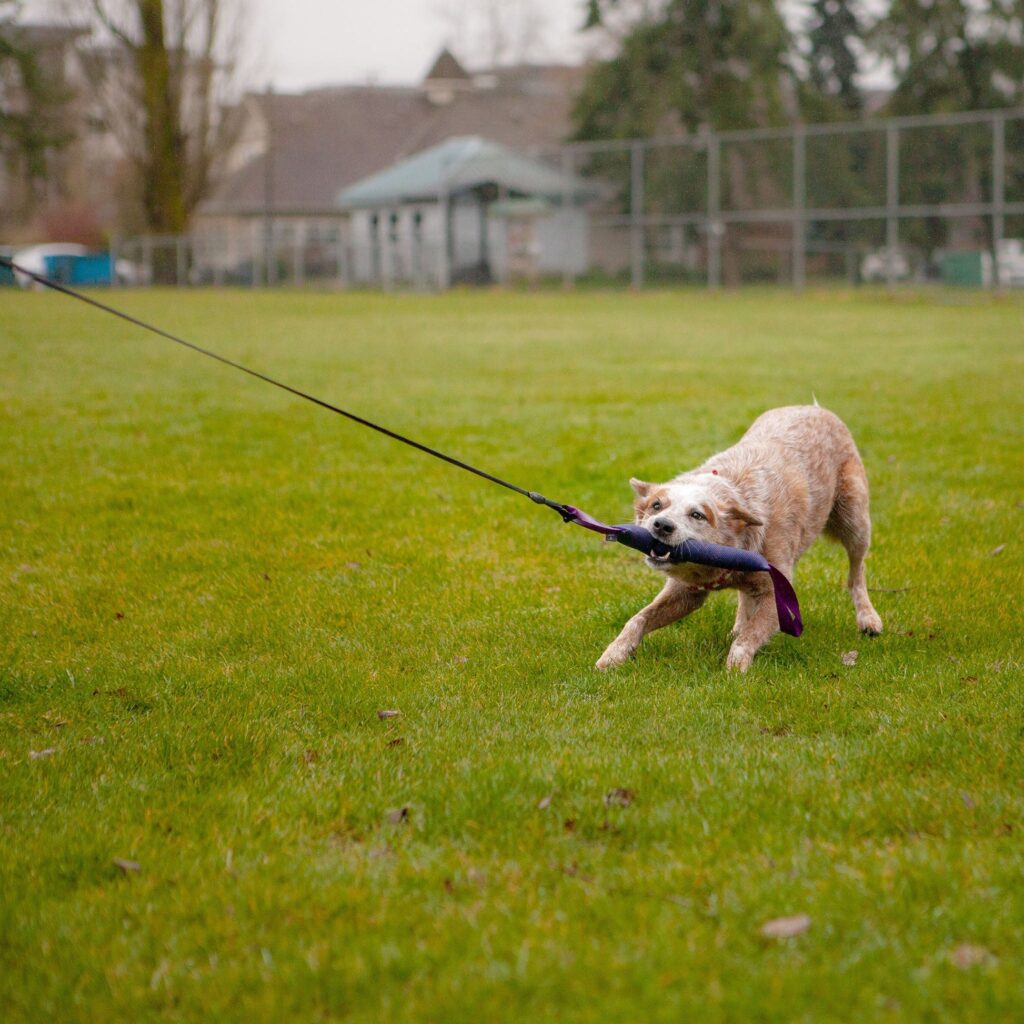
3) Try the Karl Hack:
4) Watch for moments when your puppy is getting your attention politely and generously reward those: this can teach your puppy an alternate behaviour to biting/nipping for attention. Oftentimes we miss the small, polite behaviours our dogs offer us before they resort to mouthing, jumping, etc. Your best bet is to observe your dog closely throughout the day and reinforce them for calmer, more desirable attempts to get your attention (e.g. eye contact, sitting, following you, etc.)
5) Do not pet or handle a puppy during the Witching Hour. Likewise, do not rile your puppy up by sticking your hands in her mouth or teasing her with your hands. For exercise during puppy witching hour, choose an activity where you don’t need to put your hands on the puppy: a flirt pole, gentle game of tug, a short walk or outdoor playtime around that time. If your puppy has another puppy friend (or a puppy-tolerant adult dog), you could organize some playdates around this time as well. This will give her an outlet for excess puppy energy in a way that keeps your arms and hands safe!
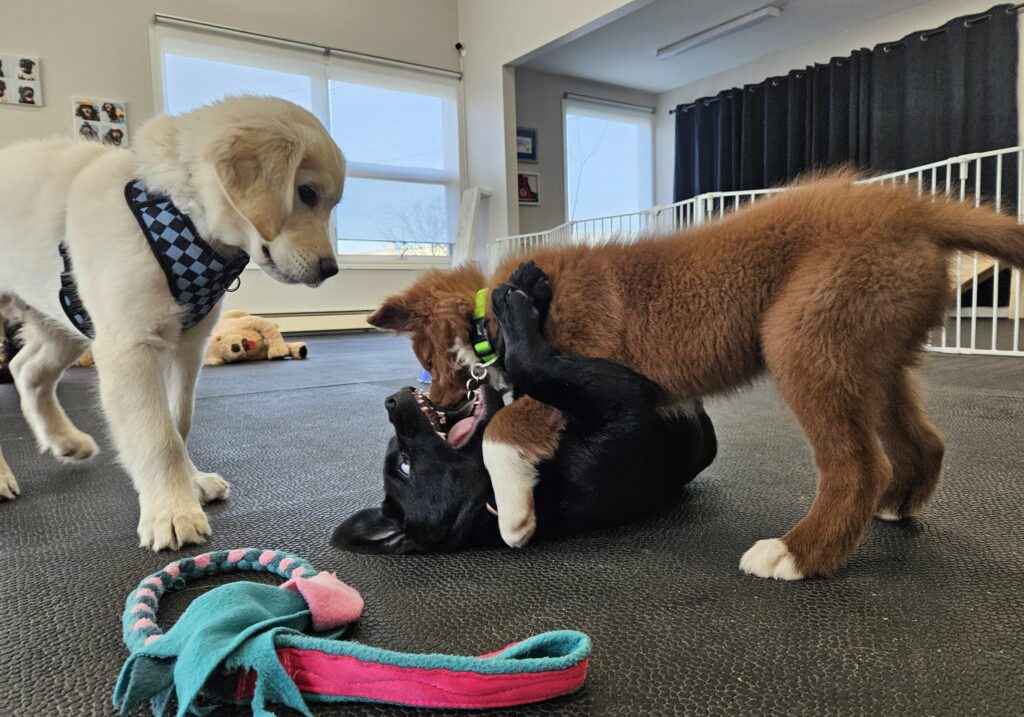
If/when your dog starts to bite hard, try using a positive interrupter sound or say ‘ok, all done!” and redirect her onto a toy or chew (no, this will not reinforce the biting- I promise!) and guide her towards her Zen Den or behind a gate, then continue to play with her while separated. (This is actually a great time to work on a gentle game of fetch or play with a flirt pole. ) Do not scold or punish a puppy- remember that they don’t understand that what they’re doing is undesirable; scolding them typically has the effect of making them more mouthy/worked up.
6) Teach Your Puppy (and yourself!) to Manage Arousal During Playtime
One of my fave games to do in puppy class is what I call “Tug-Settle-Tug”. This game is great because it teaches us humans how to play properly with our puppies and how to manage and regulate arousal. It also teaches our puppies how to calm down, problem-solve, and remain in “thinking mode” around toys and during high-energy activities. Here’s how to get started:
- Choose a toy your dog loves to play with, but not something so high-value that they can’t focus. Also have some some high-value, tasty treats ready.
- Engage your dog in a game of tug. Remember to be gentle! Don’t whip your puppy around or have them jumping too much for the toy
- Tug or play for approx. 15 seconds, then ask for a “drop it”. If your dog doesn’t know “drop it,” slide a treat down the toy to the dog’s nose and when they release the toy, say “yes” and deliver the treat. Hide the toy behind your back
- Once your dog has let go of the toy, scatter a bunch of treats on the ground. Keep energy low by gently scattering them on the floor or in a snuffle mat (don’t throw them all over the place)
- Aim for 15-30 seconds of snuffling for treats
- When your puppy is finished, say “get it!” and present the toy to your puppy. Engage your dog in tug again
- Repeat tug-scatter-tug pattern 2-3 times; end with a treat scatter.
When your puppy is consistently releasing the toy and taking treats, you can start to add in some behaviours: after tugging for 15 seconds, trade for a treat, do a treat scatter, then ask for “sit”, “touch”, eye contact, or some other cue your puppy knows well, then reward with another 15 seconds of tug.
When is Puppy Mouthing NOT Normal
Occasionally, puppy biting can be excessive and a symptom of an underlying medical or behaviour issue. If you are concerned about the intensity or frequency of your puppy’s mouthing behaviours, your best bet is to contact a certified force-free/ positive reinforcement-based trainer or behaviour consultant, or a board-certified vet behaviourist for help- they’ll be able to assess what is normal vs what isn’t in your case. But generally speaking, here are a few signs that the level of puppy biting you’re experiencing is not normal:
Excessive Intensity – The biting is so hard that it frequently breaks skin, ruins clothing (not just small holes or tears-that can be normal- but shredding, tearing sleeves clean off, or biting through tough clothing such as outdoor gear), or causes serious pain, even after attempts to redirect or teach bite inhibition.
Aggressive Body Language – The puppy growls, stiffens, or shows a hard stare while biting, rather than being playful and loose.
Frequent and Uncontrollable Biting – The puppy bites multiple times a day, especially every time they are handled, or seems unable to stop even with redirection.
Lack of Bite Inhibition Progress – If the puppy doesn’t learn to control their bite strength over time, despite consistent positive reinforcement training.
Triggered by Handling or Fear – If the biting happens mainly in response to being touched, groomed, or handled, it could indicate fear, discomfort, or pain.
Puppy mouthing is a normal and natural stage of canine development, but it can be modified and addressed through careful management and positive-reinforcement based training methods. If you’re feeling overwhelmed, frustrated, or want some one-on-one guidance for dealing with puppy biting, your best bet is to hire a force-free dog trainer who can thoughtfully guide you through this challenging stage!
